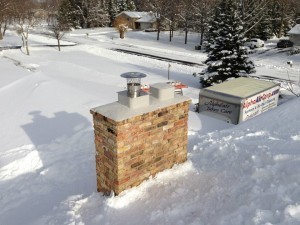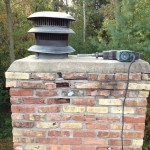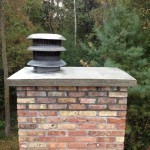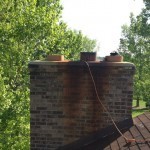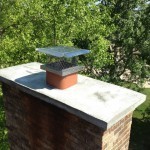Let the experts at 2nd Generation Chimneys take care of you. We are professionals in the field and are here to make sure your chimney is clean and safe for use. We care about our community and that includes you! If you’ve noticed build up, or extra smoke in your chimney, now is the time to call. It is important to set up a regular chimney sweep to ensure the proper function and safety of your chimney. The Pixley family is at your service, so give us a call today! 1-888-PIXLEYS
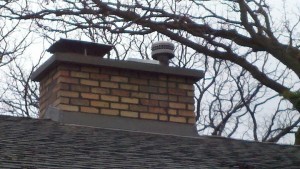
2nd Generation Chimneys, Inc. Blog: Archive for the ‘Chimney Cleaning’ Category
Everyone Needs a Good Chimney Sweep!
Friday, January 11th, 2013Winter Chimney Cleaning
Wednesday, December 19th, 2012A little snow doesn’t stop the 2nd Generation Chimneys team from getting your chimney cleaned! No matter the season, our crew is ready to work. We have a team of experts that will thoroughly inspect and clean your chimney, as well as offer any additional repair services needed. It is our goal to keep your family safe and warm all winter long.
Does Your Chimney Need Fixing?
Friday, October 5th, 2012The Pixley family does it all! We clean, sweep, inspect, install, and of course repair chimney’s and fireplaces. If your chimney is beginning to fall apart from age or other unforeseen damage, give 2nd Generation Chimneys a call to get it fixed! Our team is equipped with the skills and tools to take care of all your chimney needs.
Your Insurance Claim is Safe With Us!
Friday, July 27th, 2012The Pixley family name has been around for generations when it comes to your Chimney Repair, Chimney Cleaning, and Maintenance needs. David Pixley began his expertise with his fathers old business, Jack Pixley Sweeps. Now the proud owner of 2nd Generation Chimneys, David Pixley and his crew are here to help you with all your Chimney needs, including your Insurance Claims! Making an insurance claim can be time consuming and stressful and 2nd Generation Chimney’s is here to ensure a smooth process and a high quality repair so that your family stays safe. Give us a call today to get your Chimney inspected for fire safety. If you already are filing an insurance claim, be sure to give the Pixley family a call and we will guide you through the process!
Chimney Reline in Minneapolis
Wednesday, July 18th, 2012When it comes to quality Chimney Relining, the Pixley family name has been around for generations and remains the name to trust for all your Chimney cleaning, repair, and inspection needs. David Pixley, owner of 2nd Generation Chimneys, Inc. will ensure the highest quality craftsmanship on your Chimney Relining job. Give us a call today and let the Pixley’s take care of your Chimney needs! See the difference in quality here:
Minneapolis Chimney Cleaning and Repair Tips
Wednesday, June 27th, 2012Regular cleaning and inspections are an important part of preventive maintenance for your chimney. Scheduling cleaning and repairs for your chimney will help prevent potential safety hazards in your home such as chimney fires, carbon monoxide intrusion, and poor ventilation.
Contact 2nd Generation Chimneys, Inc. for any of the following important chimney maintenance services:
- Firebox inspection and replacement. If your firebox is cracked, it may need replacement. Do not try to replace panels for your firebox on your own. Different types of fireplaces require different types of repairs or replacements, call us for an expert chimney inspection and repair.
- Water repellant. You do not want to have a cracked and leaking chimney. Many chimneys require water protection to avoid this from happening – and should you have a leaking chimney, it would be dangerous and the repairs are more costly.
- Do not use your chimney immediately after a chimney fire. You need to be sure your chimney is inspected by a professional. 2nd Generation Chimneys, Inc. is your Minneapolis and Twin Cities chimney expert – call us and have no worries!
- Chimney Cleaning. You should have your chimney cleaned and inspected once per year. Even if you are not using your chimney very often, animals can nest in the chimney, and other hazards can present themselves, even with light use.
You should definitely call us if you notice a strong odor coming from your fireplace, or notice other issues with your chimney. We can help with these services and more at 2nd Generation Chimneys, Inc.
How to Prevent Cracks in Your Plymouth Chimney
Monday, June 4th, 2012Checking for cracks on the exterior of your chimney is something that any Plymouth homeowner can and should do. Depending on the size of the crack and the potential soot around it anyone can determine if chimney repairs are needed. Here are a few characteristics of chimneys in need of inspections, and ways you can prevent future damages.
One of the primary steps contractors and homeowners should know to take is leaving space between the chimney flue and the brick exterior. This space needs to be present because of the heat expansion that occurs within the chimney while it is being used. Without this additional space the chimney flue will expand and crack the brick exterior, which will lead to potential smoke leakage and further chimney damage.
Chimneys must be made to withstand some amount of movement, especially in towns that are known to have seismic activity. Contractors should also be particularly careful of the soil that the place the chimney on, so that the foundation of the chimney is not resting on unsecure ground. If your chimney does experience some movement it is important for homeowners to check the mortar joints, or the area where the chimney protrudes out of the roof, for gaps between the roof and the chimney.
One quick way homeowners can avoid any chimney sealing and resurfacing issues is by installing a chimney damper or cap. During the colder months, if water travels down your chimney, and freezes, there is a good chance that the expansion of water to ice will crack your brick mortar exterior. Right now 2nd Generation Chimneys is offering a discount on chimney inspections and cleanings when homeowners purchase a chimney damper. By taking advantage of this deal people will be able to save money on their heating bills by restricting air flow through their chimney, reduce water from entering their chimney, and receive a discounted chimney inspection.
To learn more about ways to reduce chimney cracks, and increase chimney efficiency please call 2nd Generation Chimneys today.

